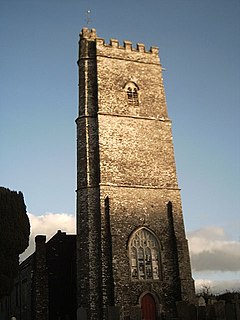
The Cook Islands is a self-governing island country in the South Pacific Ocean in free association with New Zealand. It comprises 15 islands whose total land area is 240 square kilometres (93 sq mi). The Cook Islands' Exclusive Economic Zone (EEZ) covers 1,960,027 square kilometres (756,771 sq mi) of ocean.

Tivaevae or tivaivai in the Cook Islands, tifaifai in French Polynesia, is a form of artistic quilting traditionally done by Polynesian women. The word literally means "patches", in reference to the pieces of material sewn together. The tivaevae are either made by one woman or can be created in groups of women called vainetini. The vainetini use this time together to bond, sing and catch up on village news.

Atiu, also known as Enuamanu, is an island 187 km northeast of Rarotonga, in the Southern Islands group of the Cook Islands Archipelago.
Cook Islands Māori is an Eastern Polynesian language that is the official language of the Cook Islands. Cook Islands Māori is closely related to New Zealand Māori, but is a distinct language in its own right. Cook Islands Māori is simply called Māori when there is no need to disambiguate it from New Zealand Māori, but it is also known as Māori Kūki 'Āirani, or, controversially, Rarotongan. Many Cook Islanders also call it Te reo Ipukarea, literally "the language of the Ancestral Homeland".

Takutea, in the Cook Islands, is a small uninhabited island 21 kilometres northwest of Atiu in the southern Cook Islands. Because it is only 1.22 km2 (0.47 sq mi) in size and has a very dangerous landing at the northwest corner of the reef, it has been designated a wildlife sanctuary, mainly for the red-tailed tropicbirds and red-footed boobies.

Marwood is a village in North Devon 3.5 miles (5.6 km) north of Barnstaple. The village contains 20 acres (81,000 m2) of ornamental gardens open to the public, known as Marwood Hill Gardens. The gardens were developed by Dr Jimmy Smart, who died in 2002. There is a tea-room.

The Atiu swiftlet is a species of bird in the swift family, endemic to Atiu in the Cook Islands.

Kuhl's lorikeet, also called the Rimitara lorikeet, Kuhl's lory, Manu 'Ura or Kura , is a species of lorikeet in the family Psittaculidae. It is one of several species of Vini lorikeets found in islands ranging across the South Pacific. The Kuhl for whom Nicholas Aylward Vigors named the bird in 1824 was Heinrich Kuhl, a German ornithologist whose survey of the parrots, Conspectus psittacorum, had appeared in 1819.
A Tapere or Sub-District is a low level of traditional land subdivision on five of the Lower Cook Islands, comparable to the ahupua'a of the main Hawaiian Islands. Among the populated raised islands, only Mitiaro is not subdivided into tapere. The remaining southern Cook Islands, Manuae, Palmerston and Takutea are atolls and/or uninhabited, and therefore not subject to this type of traditional subdivision. The atolls of the northern Cook Islands are subdivided into motu, instead.
Mapumai Swamp is the largest wetlands area in the Cook Islands. It is located in the north of Atiu Island.
Nandi Tuaine Glassie is a Cook Islands politician and former Cabinet Minister. He is a member of the Cook Islands Party.

Tengatangi-Areora-Ngatiarua is a Cook Islands electoral division returning one member to the Cook Islands Parliament. Its current representative is Nandi Glassie, who has held the seat since 2006.

Renewable energy in the Cook Islands is primarily provided by solar energy and biomass. Since 2011 the Cook Islands has embarked on a programme of renewable energy development to improve its energy security and reduce greenhouse gas emissions, with an initial goal of reaching 50% renewable electricity by 2015, and 100% by 2020. The programme has been assisted by the governments of Japan, Australia, and New Zealand, and the Asian Development Bank.
Teenui-Kurukava, is a village on Atiu in the Cook Islands.
Areora Village (Te-Are-O-Tangaroa), is a village on Atiu in the Cook Islands.
Tengatangi (Taturoa), is a village on Atiu in the Cook Islands. It forms part of the Tengatangi-Areora-Ngatiarua electoral division.
Mapumai Village (Mapumai-Nui-O-Ruavari), is a village on Atiu in the Cook Islands. On Atiu, Mapumai Village plays an important role, because it houses a school, radio Atiu, and more. The population of Mapumai is 86 people, who live and stay in the village.
Anatakitaki Cave, or the Cave of the Kopekas, is a karst cave located in the northeast of Atiu, Cook Islands. The cave is a large solutional cave, with many offshoot chambers and passages. A freshwater lake is to be found at the base of the cave. The Tiroto Tunnel connects this lake to the Pacific Ocean, and can be waded along until the last portion which is totally submerged. There is a great array of all sorts of speleothems decorating the cave throughout its length. The cave's alternate name comes from its population of Atiu swiftlets, which roost in the cave in vast numbers. They never land outside of the cave, and use echolocation just like bats. Roots, mainly from banyan trees, permeate the cave to its furthest depths.

Arago hotspot is a hotspot in the Pacific Ocean, presently located below the Arago seamount close to the island of Rurutu, French Polynesia.









